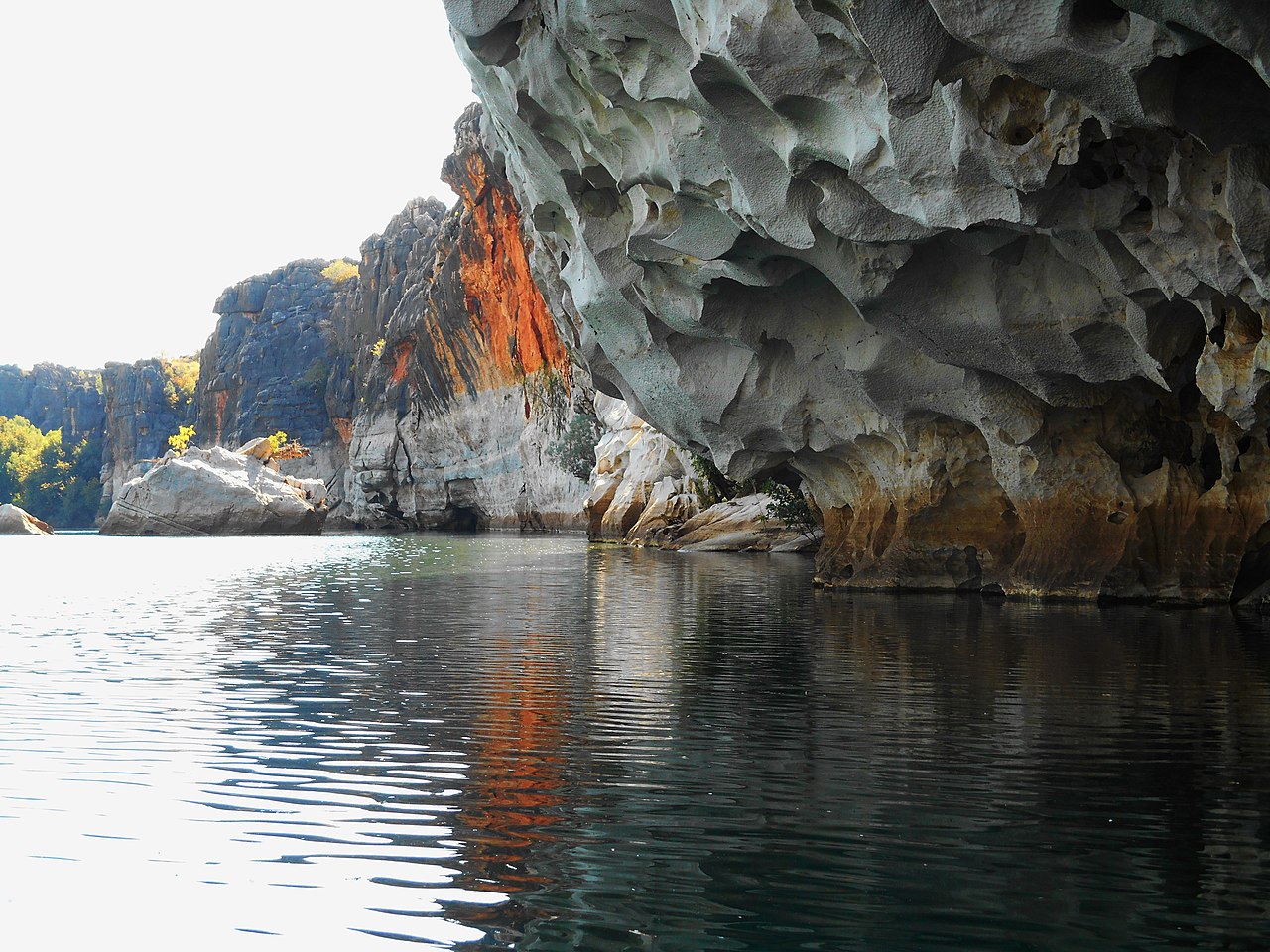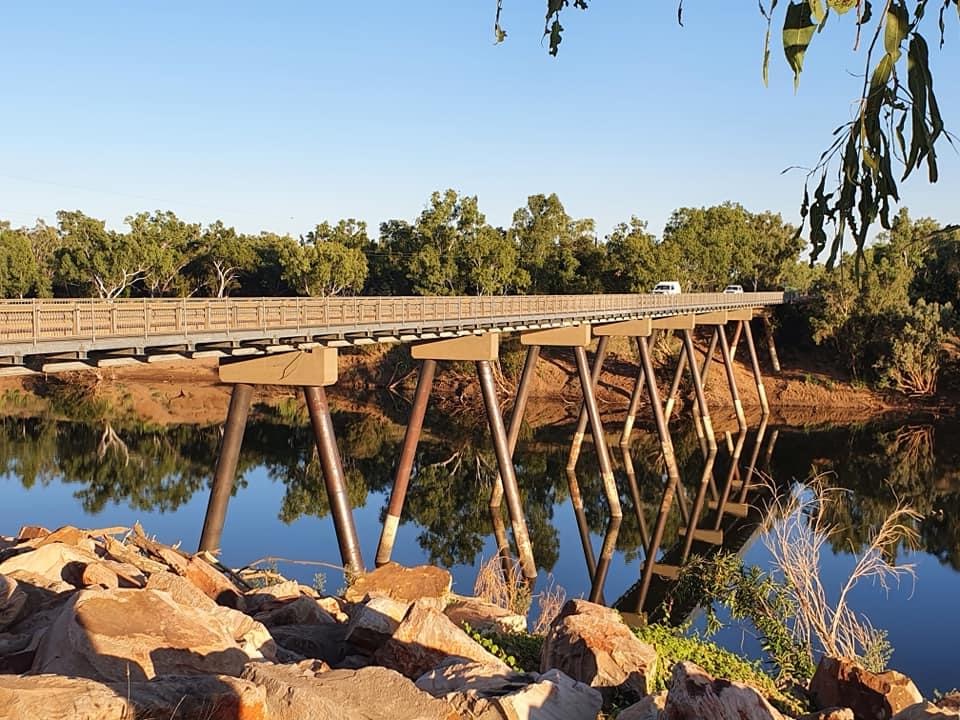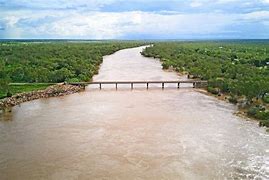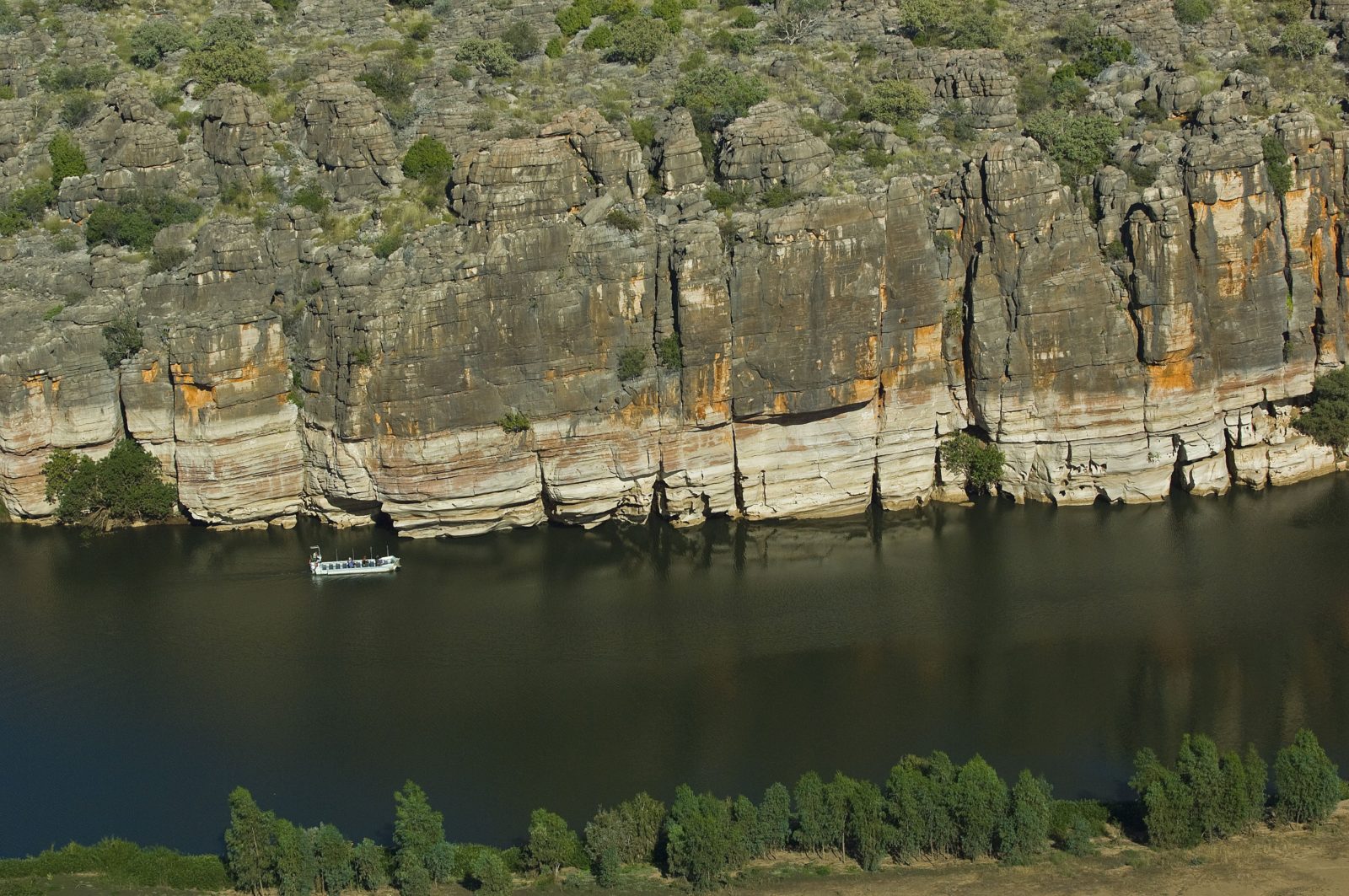
AsianOverland.net
Tour Guide - Itinerary
Asian Overland Sydney to London
Started 22/06/2022 Finished 21/06/2023365 Days ITINERARY
Day 24 date 15/07/2022DERBY to FITZROY CROSSING, THE KIMBERLEY
ASIANOVERLAND.NET SYDNEY TO LONDON DAY 24: DERBY TO FITZROY CROSSING, THE KIMBERLEY
The Fitzroy River from Derby travelling east in the Kimberley has 20 tributaries and its catchment occupies 94,000 square kilometres, within the Canning Basin and the Timor Sea drainage division.
The first people to live along the Fitzroy River were the traditional owners of the areas around the river, including the Bunuba and Nyikina people to the west, and the Walmajarri and Gooniyandi people to the east, who have lived in the area for at least 40,000 years. The Nyikina and Bunuba people know the river as Mardoowarra and Bandaral Ngarri respectively; the river and its vast floodplains are of great spiritual, cultural, medicinal and ecological significance. The Nyikina word Raparapa, translates as "alongside the river”.
The walls of Geike Gorge only 20 kilometers from Fitzroy Crossing are 30 metres high. The eight kilometer gorge was created by the flowing waters of the Fitzroy River, which still flows through and is used by tourist boats to access Geike Gorge. Freshwater crocodiles, sawfish and coach-whip stingrays inhabit the river, and rock wallabies live on the steep vertical gorge cliffs.
Geikie Gorge (known locally as Darngku) is a feature of the Napier Range and is located within the grounds of Danggu Gorge National Park (formerly, Geikie Gorge National Park).
Along with Tunnel Creek and Windjana Gorge, Geikie Gorge is part of an ancient barrier reef that developed during the Devonian Period, a geologic period spanning 60 million years from 420 million years ago to 360 million years ago.
The Fitzroy River often floods during the wet season, and is the major remaining habitat for the critically endangered sawfish. Sawfish, also known as carpenter sharks, are a family of rays with a long, narrow, flattened rostrum, or nose extension, lined with sharp transverse teeth, arranged in a way that resembles a saw. They are among the largest fish, with some species reaching lengths of 7.6 meters.
Sawfish are protected in Australia and only Indigenous Australians can legally catch them. Australia was the only country that could export wild-caught sawfish for the aquarium trade from 2007 to 2011 (no country after 2011). This strictly involved the largetooth sawfish from Fitzroy River. Numbers traded were very low (eight between 2007 and 2011), and Australia did not export any after 2011.
Since 2000, largetooth sawfish have been monitored in Fitzroy River, a primary stronghold for the species. In December 2018, the largest recorded mass fish death in the river occurred when more than 40 sawfish died, mainly because of heat and a severe lack of rainfall during a poor wet season.
A study by Murdoch University researchers and Indigenous rangers, which captured more than 500 sawfish between 2002 and 2018, concluded that the survival of the sawfish could be at risk from dams or major water diversions on the Fitzroy River. It found that the fish are completely reliant on the Kimberley's wet season floods to complete their breeding cycle, and in recent drier years, the sawfish population has suffered.
The Fitzroy Crossing Camping Ground is a good one on the Fitzroy Riverbank in the dry season, but frogs are everywhere and can makes things uncomfortable for you if someone has left the toilet seat up.
© This work is copyright. Apart from any use permitted under the Copyright Act 1968, no part may be reproduced by any process, nor may any other exclusive right be exercised, without the permission of Peter Searle, peter@portseavillageresort.com; 1980-2024.
Website built by Justin O’Dea www.webdeveloperdocklands.com.au









